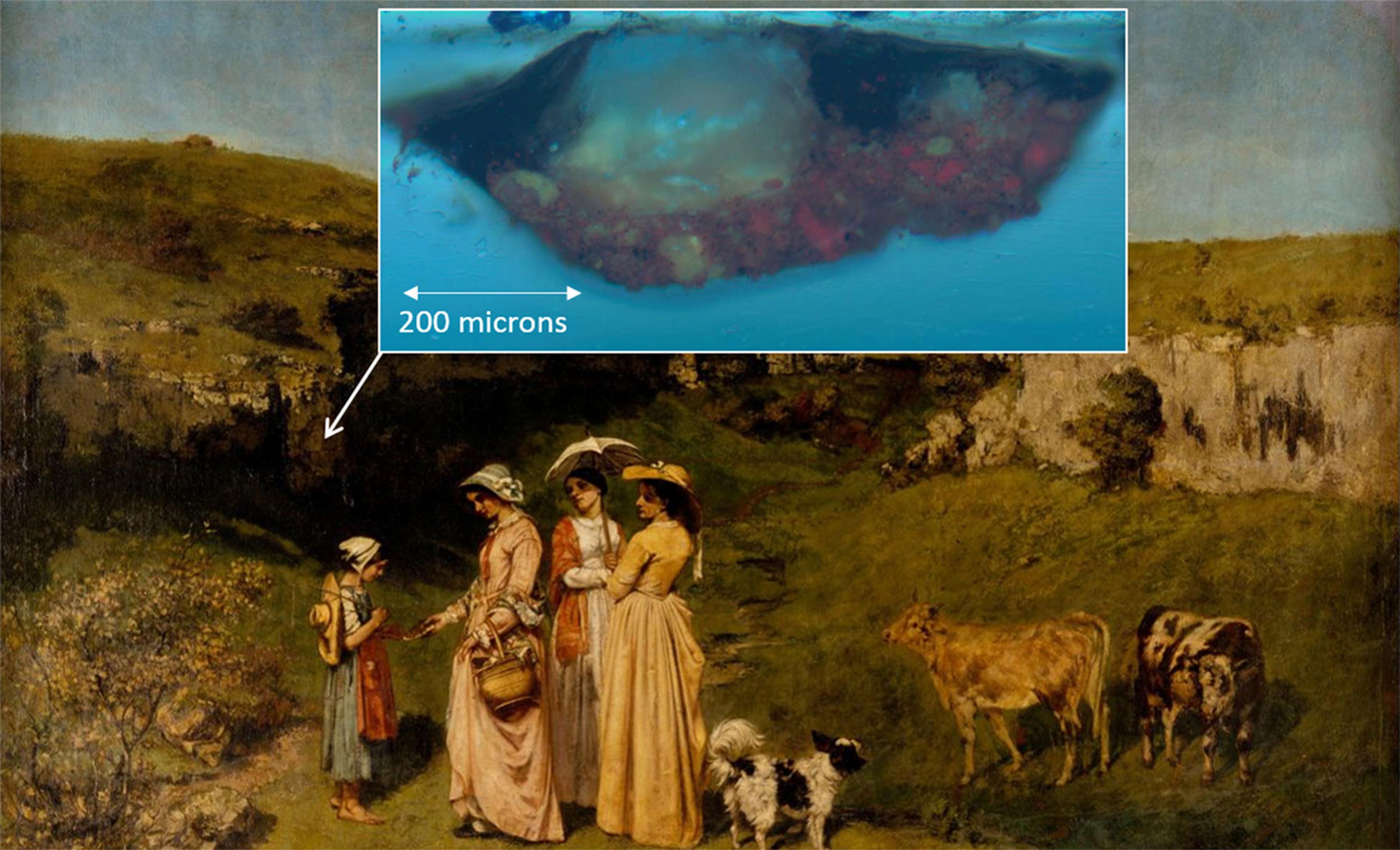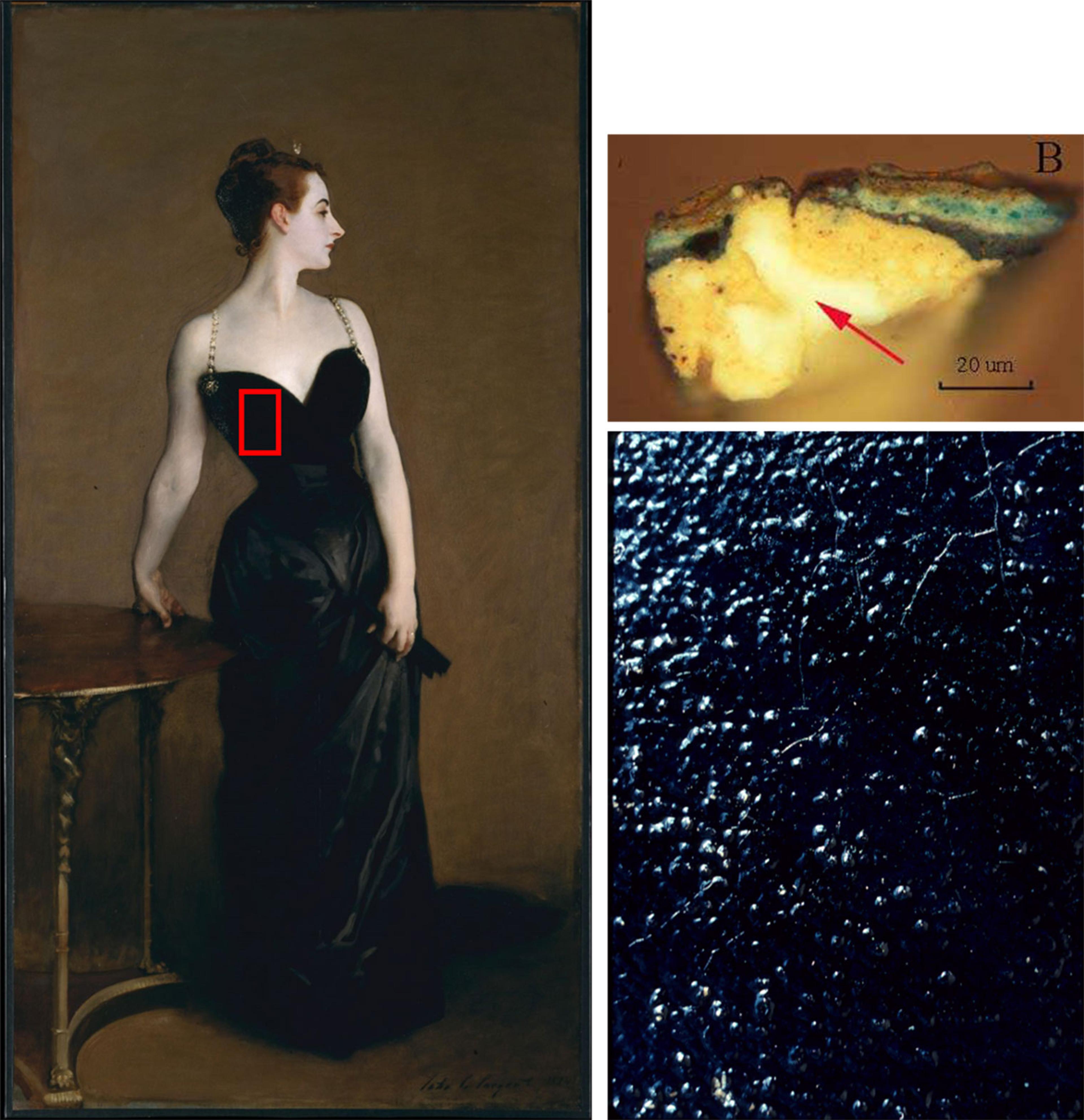A major goal of this project is to determine the causes and mechanisms of a degradation process in traditional oil paintings known as soap formation. Soaps are salts (carboxylates) formed by heavy metals present in the pigments, such as lead and zinc, and fatty acids in the oil-binding medium. This deterioration may compromise the integrity of the artwork in various ways, such as by forming protrusions that break through the paint surface or disfiguring surface crusts or by increasing the transparency of the paint. Despite soap formation having been identified in hundreds of works of art dating from the fifteenth century to the present, the factors trigger the process, what the mechanisms are, and how it can be arrested or prevented are not well known.

Microscopic image of a paint section in Courbet’s Young Ladies of the Village. Gustave Courbet (French, 1819–1877). Young Ladies of the Village, 1851–52. Oil on canvas, 76 3/4 x 102 3/4 in. (194.9 x 261 cm). The Metropolitan Museum of Art, New York, Gift of Harry Payne Bingham, 1940 (40.175)
We are currently studying the effect that the transport of fatty acids and ions through the paint films, as mediated by water, have on the deterioration process and how this transport is influenced by aging and by environmental conditions such as temperature and relative humidity. To study these factors, we are using a novel approach that combines solid-state nuclear magnetic resonance (NMR) spectroscopy and synchrotron-based x-ray techniques, the latter in collaboration with scientists at Brookhaven National Laboratory.

Microscopic image of paint section in Sargent’s Madame X. John Singer Sargent (American, 1856–1925). Madame X (Virginie Amélie Avegno Gautreau), 1883–84. Oil on canvas, 82 1/8 x 43 1/4in. (208.6 x 109.9cm). The Metropolitan Museum of Art, New York, Arthur Hoppock Hearn Fund, 1916 (16.53)
Understanding the nature of the chemical processes gives art conservators information on ways to slow, stop, or prevent the deterioration of unique artworks. For example, knowledge of the effect of relative humidity on the reaction allows conservators to assess the best possible environmental conditions to display and store the works, or whether aqueous solutions are safe to use in conservation treatments.